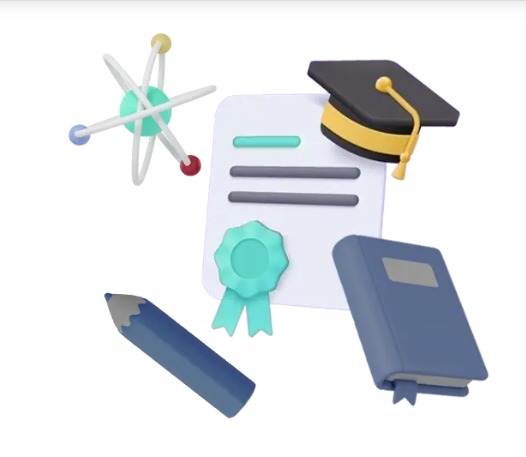In the modern digital age, online learning has become more and more popular since it offers students everywhere convenience, flexibility, and accessibility. Nevertheless, online course management is crucial to ensuring student engagement, productivity, and superior learning outcomes. Using efficient class management techniques is crucial, regardless of whether you’re a student adjusting to remote learning or a teacher making the switch to virtual instruction.
Although overseeing online classrooms can present special challenges, you can provide your students with an effective and interesting learning environment by using the appropriate tactics and procedures.
Also, you can get rid of academic burden by typing on the browser “Take my class for me.” We’ll look at five practical methods in this blog post to assist you in managing your online classes.
The Value of Developing Class Management Strategy
It’s critical to comprehend the importance of having a clearly defined approach to online class management before diving into specific tactics. With so many distractions and no physical presence in the virtual learning environment, an organized approach provides a framework for productivity, attention, and order. In addition to creating a learning atmosphere, good classroom management techniques also support the development of participant accountability, teamwork, and a feeling of community. By putting these techniques into practice, teachers can design stimulating lessons that help students reach their learning objectives and succeed academically.
Let us examine the ten most effective strategies and ways for managing online classes:
Set Clearly Definable Expectations:
At the start of the course, communicate the goals, rules, and expectations. Forward a syllabus to students detailing the needs of the course, the standards for grading, the dates for assignments, and the procedures for communication. Throughout the learning process, pupils who possess clarity are more confident and remain on course.
Interactive Learning Environments:
Make use of interactive learning environments and resources to raise student involvement and engagement. Student collaboration and involvement are encouraged via platforms like Zoom, Google Meet, or Microsoft Teams, which include tools like chat, polls, and breakout rooms. The key is to create an environment where students feel motivated and inspired to actively participate in their own learning journey.
Harness the Power of Multimedia:
Incorporate multimedia materials into your online courses to accommodate your students’ varied learning preferences. Use animated videos and real-world situations to draw in visual learners. Use podcasts and lecture recordings to appeal to auditory learners. Additionally, interactive tests and simulations offer hands-on experiences that replicate real-world scenarios for learners who like to learn by doing.
Promote Active Engagement:
Ask your students to converse with one another, complete group tasks, and collaborate in teams. This enables them to participate in their schooling. Students learn from one another and develop their critical thinking skills when they participate in class discussions and pose insightful questions. They also develop better at cooperating, communicating, and working toward common objectives through group tasks.
Encourage Active Student Engagement:
It can be a little harder to engage pupils in an online environment than in a traditional classroom. You can use a range of interactive technology and tactics to keep your students engaged. Add interactive presentations and movies to your multimedia content to provide students a more engaging education. Promote student involvement through virtual presentations, group projects, and online chats.
Give Prompt and Consistent Feedback:
Student development depends on feedback. Giving prompt and frequent feedback on discussions, quizzes, and assignments should be your top responsibility. This will show pupils how committed you are to their learning process while also assisting them in understanding their progress. To maintain uniformity and expedite the feedback process, make use of online grading tools and rubrics.
Build a Strong Community:
Give your online learners a sense of belonging. They may feel more engaged and driven as a result of this. Use online group activities, peer review, and discussion forums as tools to promote communication and teamwork. Organize virtual office hours or live video sessions to foster connections between students and you.
Utilize Technology to Keep Connected and Organized:
You can better organize your online classes with the aid of technology. To stay organized and track announcements, assignments, and course materials, use learning management systems (LMS) or similar technologies. Use email, chat apps, and discussion forums to stay in touch with your students. To enhance learning, think about utilizing online assessments and virtual whiteboards.
Gamify the Learning Process:
By adding game aspects to your online classroom, you may make learning enjoyable and interesting. You may design online scavenger hunts, leaderboard challenges, and interactive quizzes. In addition to adding excitement, gamification encourages students to take part actively and set goals for themselves. It’s also a fantastic technique to encourage healthy competition among your kids and reinforce important
WonderWorks Myrtle Beach Kicks Off Field Trip Season(Opens in a new browser tab)
Encourage Self-Reflection:
Regularly assigning self-reflection exercises to your students can help them become more conscious of their own learning processes. Encourage them to consider their best approaches, opportunities for growth, and strong points. With the help of this metacognitive method, students can gain the key lifelong learning skills and take charge of their education.
In conclusion, careful planning, clear communication, and the application of the proper tools and methods are all necessary for the efficient administration of virtual classrooms. For your students, you may establish clear expectations, encourage involvement, give timely feedback, build a sense of community, and use technology to create a good and productive online learning environment.
